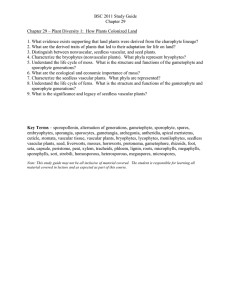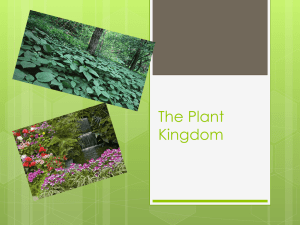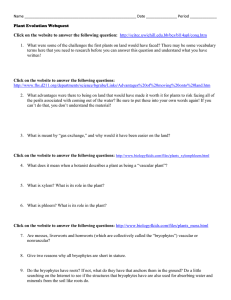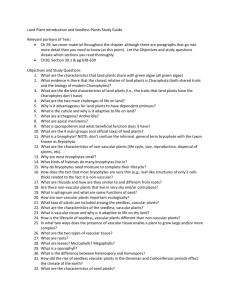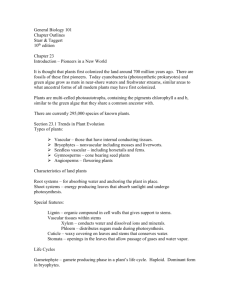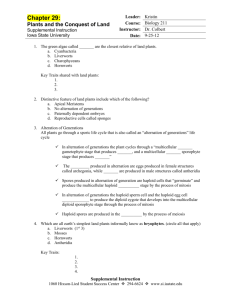Supplemental notes for Exam #2
advertisement
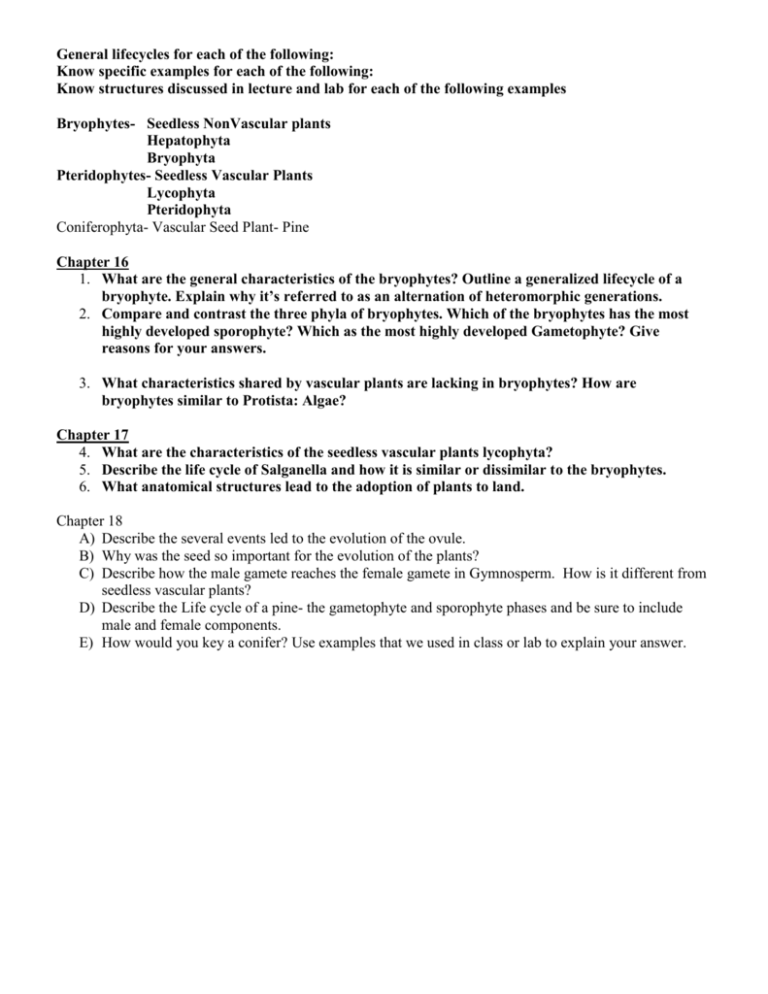
General lifecycles for each of the following: Know specific examples for each of the following: Know structures discussed in lecture and lab for each of the following examples Bryophytes- Seedless NonVascular plants Hepatophyta Bryophyta Pteridophytes- Seedless Vascular Plants Lycophyta Pteridophyta Coniferophyta- Vascular Seed Plant- Pine Chapter 16 1. What are the general characteristics of the bryophytes? Outline a generalized lifecycle of a bryophyte. Explain why it’s referred to as an alternation of heteromorphic generations. 2. Compare and contrast the three phyla of bryophytes. Which of the bryophytes has the most highly developed sporophyte? Which as the most highly developed Gametophyte? Give reasons for your answers. 3. What characteristics shared by vascular plants are lacking in bryophytes? How are bryophytes similar to Protista: Algae? Chapter 17 4. What are the characteristics of the seedless vascular plants lycophyta? 5. Describe the life cycle of Salganella and how it is similar or dissimilar to the bryophytes. 6. What anatomical structures lead to the adoption of plants to land. Chapter 18 A) Describe the several events led to the evolution of the ovule. B) Why was the seed so important for the evolution of the plants? C) Describe how the male gamete reaches the female gamete in Gymnosperm. How is it different from seedless vascular plants? D) Describe the Life cycle of a pine- the gametophyte and sporophyte phases and be sure to include male and female components. E) How would you key a conifer? Use examples that we used in class or lab to explain your answer. Use your notes to prepare for the Exam. Be aware that not all terms presented in class are shown here and that some of these terms shown below may not be on the exam. Chapter 16 Bryophyte, liverworts, hornworts, mosses, thalli, lignin, pores, venter, anthredia, archegonia, vascular plants, Marchantia, xylem, phloem, alternate generations, gemmae, embryophytes, sporopollenin, dichotomous, antheridiophores, archegoniophores, foot, seta, calyptra, spores, sporangium, stalk, spermatogenous cells, sterile jacket layer, young sporophyte, class sphagnum, peat mosses, operculum, embryo, zygote, egg, sperm, germinating spores, Chapter 17 Seedless Vascular Plants, root system, shoot system, dermal tissue, vascular tissue, ground tissue, primary growth, apical meristem, primary tissue, secondary growth, vascular cambium, secondary tissue, cork cambium, tracheary elements, pith, stele, protostele, siphonostele, eustele, microphylls, megaphylls, sporophyll, homosporous, heterosporous, microspores, megaspores, suspensor, rhizoids, endomicrorrhizal, lycophytes, club moss, stobilus, selaginella, resurrection plant, megasporophylls, microsporophylls, pteridophyta, ferns, circinate vernation, fiddleheads, sorrus, prothallus, Psilotales, water ferns, Equisetum, horsetails

